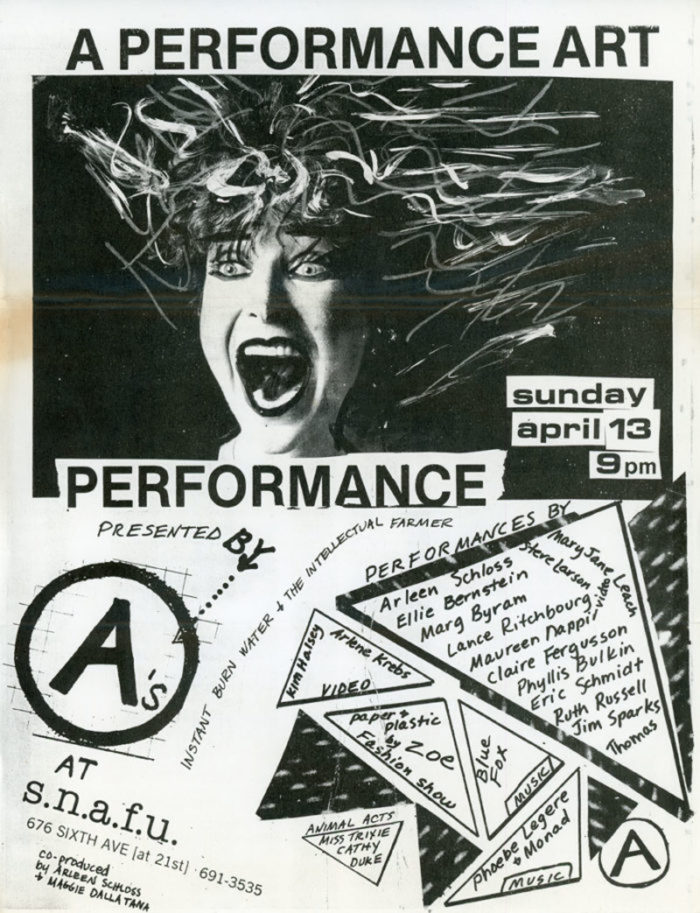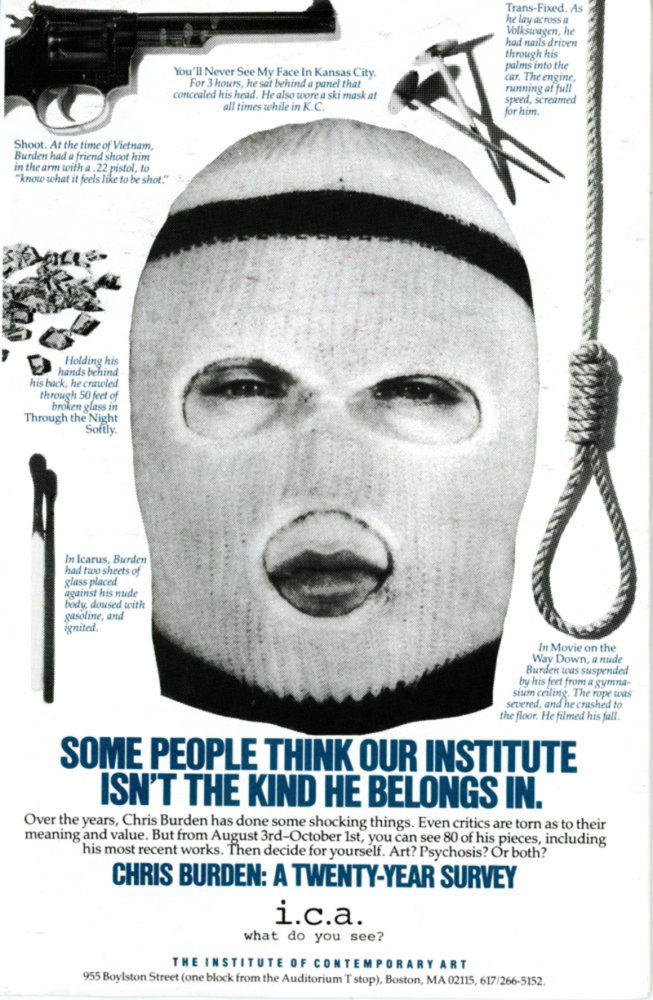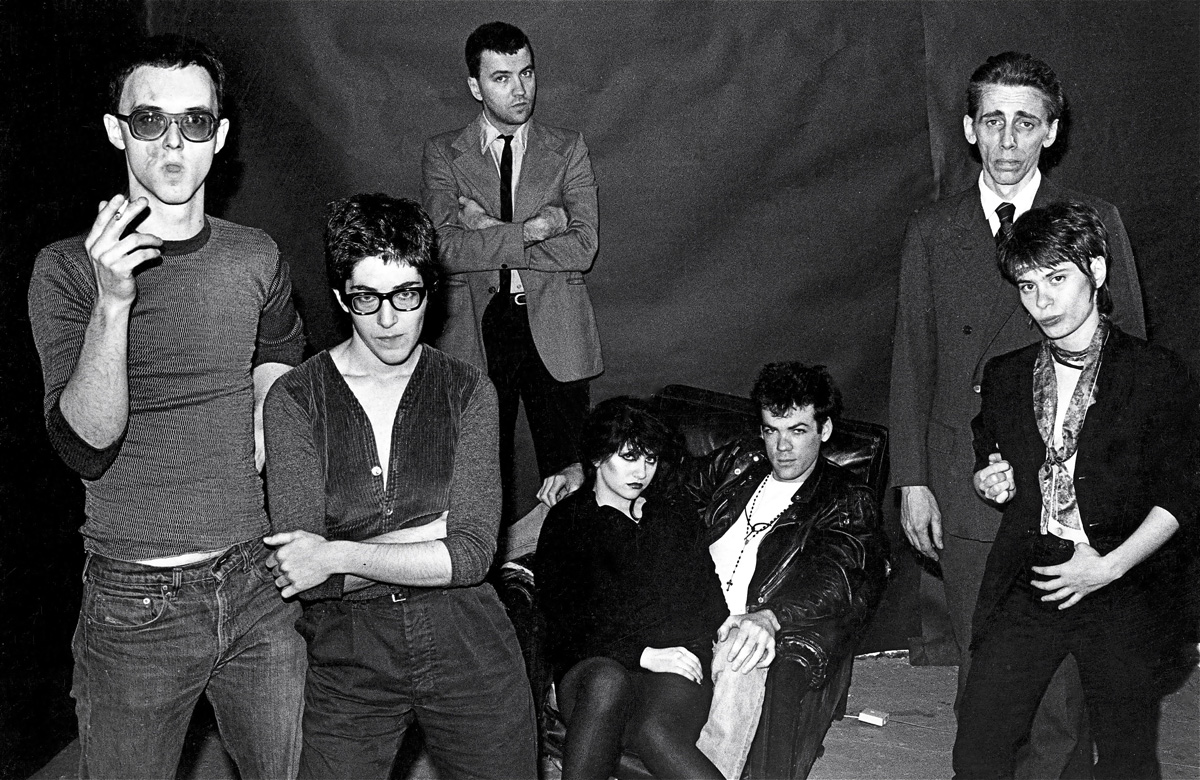Art ephemera plays a particularly important role in promoting performance art. Not only are announcement cards and flyers a key factor in attracting audiences for these short duration events, they also live on after the performance, and are sometimes the only surviving record of what took place.
Here is a selection of art ephemera from the Gallery 98 inventory all of which dates from the 1970s and 80s, a period when performance art enjoyed high visibility and acclaim. But exactly what constitutes performance in the fine arts context has always been elusive. Some of the performance art ephemera below are linked to body art, an outgrowth of conceptual art, while others are more akin to off-Broadway theater and No Wave music performances.
A’s at s.n.a.f.u., A Performance Art Performance, early 1980s

$150
Purchase
Arleen Schloss (pictured here) was not only a noted performance artist but also a promoter and organizer who transformed her living loft into the A’s performance space and also curated performance art events at nightclubs like s.n.a.f.u. Schloss was open to just about anything and would offer a stage to just about anyone. She favored experimentation and was open to amateurism. She performed with Glenn Branca and many of the acts at A’s were connected to the No Wave music phenomenon: Alan Vega (Suicide), the Coachmen (predecessor of Sonic Youth), and Test Pattern (with Jean Michel Basquiat and Michael Holman). Gallery 98 has an extensive collection of A’s Xerox flyers all designed and lettered by Schloss.
Marina Abramović and Ulay, An Early Performance, 1976

Harlekin Art Gallery (Germany), Marina Abramovic & Ulay, Card, 1979. Size: 6.75 x 4 Inches
Marina Abramović and Ulay met in Amsterdm in 1975 and began a 12-year relationship as collaborating performance artists. This card is from a 1979 exhibition in Germany featuring photographic and video documentation of their earlier performances. Pictured is an early 1976 performance from their series Relation Works. While most of the performances in this series involved conflict, pain and the dangers in trusting a partner, this tender untitled work shows something entirely different. According to Ulay, what the couple usually did in performances was actually “the absolute opposite of how we understood, lived and loved each other.”
Tehching (Sam) Hsieh, One Year Performance (Cage Piece), 1978-79

“One Year Performance (Cage Piece),” Tehching (Sam) Hsieh, Card, 1978-79. Size: 4 x 6 inches.
In the late 70s and early 80s Tehching (Sam) Hsieh caught the art world’s attention with a series of grueling yearlong duration performances. This card is from the first of this series when Hsieh lived for a year in a small wooden cage with only a wash basin, lights, a pail and a small bed. To make the performance even more difficult, he did not talk, read, write or listen to radio or TV. Hsieh lavished much attention on the art ephemera connected to his performances. Gallery 98 has a large collection of Hsieh posters for other endurance performances including Time Clock (1980-81), Outdoor Piece (1981-82), and Rope Piece (1983-84).
Chris Burden, A Twenty Year Survey, 1969-1989

$150
Purchase
The cover of the brochure for this 20-year survey of Chris Burden’s art at Boston’s Institute of Contemporary Art emphasizes his early performance art from the 1970s. The gun is from the notorious Shoot, where he had a friend shoot him in the arm with a 22 pistol; the nails are from Trans-Fixed where he was crucified on a Volkswagen; and the ski mask is from the performance You’ll Never See My Face in Kansas City. The brochure notes that Burden’s performances of the 1970s “may be understood in the context of both the Conceptual Art movement, which sought to redefine the art object, and the enormous social fermentation of the sixties and seventies.”
Penny Arcade, While You Were Out, 1985

Penny Arcade’s long road to becoming an acclaimed performance artist began at age seventeen when she joined John Vaccaro’s Playhouse of the Ridiculous in the late 70s. Jack Smith, Charles Ludlam and Andy Warhol were others who helped shape her approach to performance. While You Were Out, her first full-length evening of original improvised work, featured sharp-tongued monologues about life as an outsider. It first premiered at the Poetry Project and Performance Space 122 before moving to University of the Streets where it ran for four months.
David Shapiro, Taylor Mead, Laurie Anderson, Harrisburg Mon Amour or Two Boys on a Bus, 1980

$150
Purchase
The Kitchen, founded in 1971 in Soho, was the prime venue for new forms of multimedia art that crossed traditional boundaries. Inspired by the nuclear accident at Three Mile Island, Harrisburg Mon Amour or Two Boys on a Bus is an example of non-traditional political theater. Written by poet David S. Shapiro with the music of conceptual artist and musician Laurie Anderson, the play starred the underground actor Taylor Mead playing both of the two boys on a bus heading toward a nuclear meltdown.











